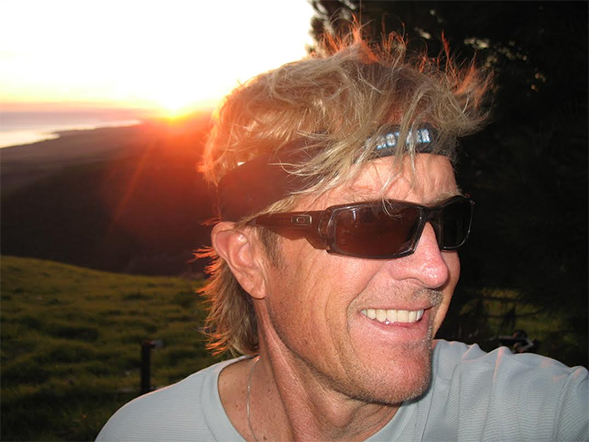Off the Beaten Course: ENS 438
This course explores the social, political and cultural implications of sports-related injuries.

Off the Beaten Course is a series that delves into SDSU's course catalog to share unique and non-traditional classes.
Course title: Psychosocial Aspects of Sports, Injury, Illness and Rehabilitation
Instructor's name: Scott Tinley
1) What was the impetus for the development of this course?
The School of Exercise and Nutritional Sciences is interested in the development of well-rounded kinesiologists, therapists, trainers, nutritionists and more. Sports scientists and practitioners who understand the varied approaches to health and human performance.
To that end, it was decided by the faculty that a course should be developed to explore the social, psychological and even the many cultural factors surrounding sports-related illness, injury and rehabilitation. I was lucky enough to get the nod to design and teach the course.
2) What can students expect to learn from this course?
It’s a survey course that covers everything from how chronic traumatic encephalopathy is portrayed in mass media to how athlete peer pressure functions differently in emerging vs. traditional sports to the role of self-narrative in sports pain management.
Every reading, lecture and activity was developed with the opportunity for the student to consider the material in relation to their own experiences with injury, illness, disability, pain and rehabilitation. Because of the universality of sports-related pain, injury and illness, just about any approach — from humor to metaphysics to ethical theorems — can be used. The goal — and it’s a lofty one — to facilitate “a-ha” moments of discovery on a weekly basis.
3) What makes this course different from similar courses?
The School of Exercise and Nutritional Sciences offers a magnificent emphasis in athletic training and rehabilitation led by excellent professors. We’ve tried to expand on the bio science-centric study of injuries and illness by asking questions such as "how exactly is clinical depression related to torn ligaments?" and "why so few physically-challenged athletes make Wheaties cereal covers?" And to be honest, there are few, if any, analog courses, let alone rehab-related classes that have time to consider deeply for example, how cultures of risk and institutionalized violence function in a sport-crazy society.
4) Does it sometimes feel like you focus on the negative side of sports in this class?
Yes and no. The reality is that anyone who chooses a physical life alters their chances of becoming injured or ill and requiring some kind of intervention. For students, talking about disengagement from sport as a kind of social death, for example, is liberating, almost a form of group therapy. And deviance in sport does not always lead to negative results. Most of the great scientific discoveries in sport were catalyzed in a form of deviant behavior.
5) Is there one day on the syllabus for this course you most look forward to? If yes, why?
I have a bank of incredible guest speakers with fascinating personal tales of sports injury, illness and rehabilitation. Willie Stewart, for example, one of the highest-performing single arm amputees in the world told the class a hilarious and poignant story about the first time he had sexual relations after losing his arm. The speakers illustrate the relevancy of the ideas and theories we discuss. On those days I am humbled by these great athletes willing to volunteer their stories of not just surviving but thriving after catastrophic occurrences.
5) What’s your favorite thing about teaching this course?
My academic (Ph.D. in cultural studies) and experiential (professional athlete and writer) backgrounds allow me the opportunity to draw from a variety of influences in talking about things like risk and reward, pain and pleasure, fame and failure. I truly believe that if a student or athlete understands the broader context of getting hurt and healed, the more they can grow rather than suffer when effected.



